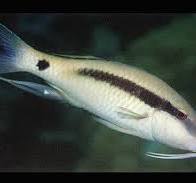Long barbel Goatfish
Long barbel Goatfish
check_circle Fast Shipping
check_circle Quality Products
check_circle Affordable Price
Reach out to us on ''available to order'' items via WhatsAp or email
Low stock: 1 left
Couldn't load pickup availability

Long barbel Goatfish
package_2
Product Description
Product Description
Species Overview
-
Common name: Longbarbel Goatfish
-
Scientific name: Mulloidichthys flavolineatus (Yellowstripe Goatfish) or similar species
-
Origin: Indo-Pacific reefs
-
Adult size: 25–40 cm (10–16")
-
Lifespan: 6–10 years in well-maintained aquariums
🌈 Appearance
-
Body: Elongated, cylindrical body with a yellow lateral stripe from head to tail.
-
Fins: Typically yellow dorsal and caudal fins.
-
Barbels: Two long sensory barbels under the chin, used to detect food in the substrate.
-
Juveniles are smaller, paler, and gain full coloration with age.
🏞 Tank Requirements
-
Tank size: Minimum 600L+ for a single adult due to active swimming and size.
-
Water parameters:
-
Temperature: 24–28 °C
-
pH: 8.1–8.4
-
Salinity: 1.020–1.025 SG
-
-
Aquascape:
-
Open swimming areas are essential.
-
Sandy substrate is required for foraging with barbels.
-
Rocks and caves for resting spots.
-
🍽 Diet
-
Natural diet: Small invertebrates, worms, crustaceans, and detritus.
-
In captivity: Sinking meaty foods (mysis, chopped shrimp, brine shrimp), occasional algae wafers.
-
Barbels are actively used to search substrate, so feeding should encourage natural foraging.
👫 Behavior & Compatibility
-
Peaceful to semi-aggressive: Mostly bottom dwellers; may compete for food with other benthic fish.
-
Active swimmers; prefer larger tanks with other midwater or bottom-dwelling species.
-
Avoid very small fish or invertebrates that could be eaten.
🐣 Breeding
-
Rarely bred in home aquariums; mostly wild-caught.
-
Reproduction occurs in the wild via pelagic spawning.
⚡ Key Selling Points
-
Striking yellow lateral stripe and long barbels make it a standout centerpiece in marine tanks.
-
Active forager that adds natural movement and interest to the substrate.
-
Hardy and adaptable in large marine display tanks.
-
Unique behavior with barbels encourages natural feeding observation.


